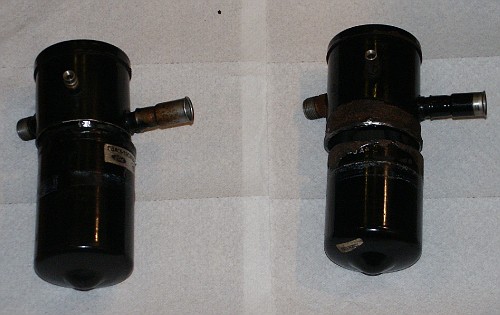
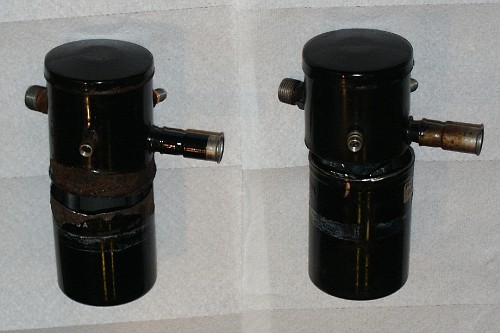
| Diagram Color |
Comments |
| Blue |
Connection to upper evaporator
tube |
| Green |
Connection to a/c compressor
suction hose |
| Yellow |
Liquid-vapor seperation dome |
| Red |
Refrigerant oil metering
components |
| Violet |
External case of accumulator |
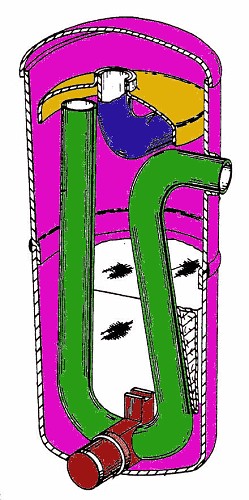

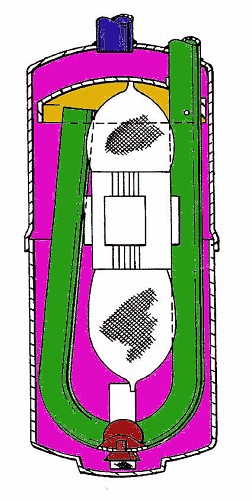
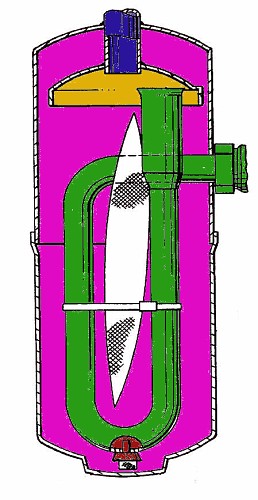

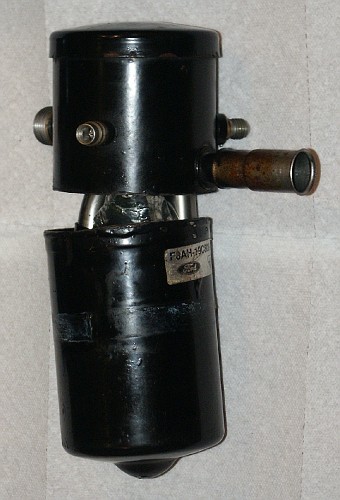
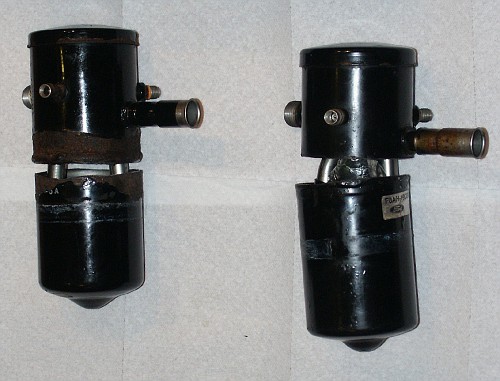
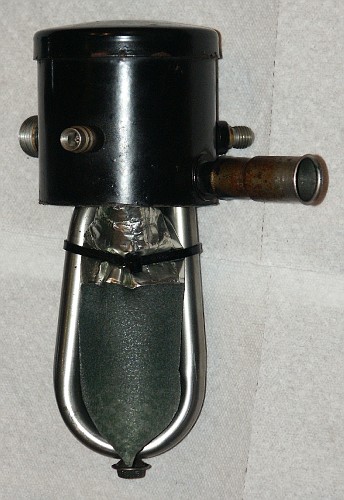
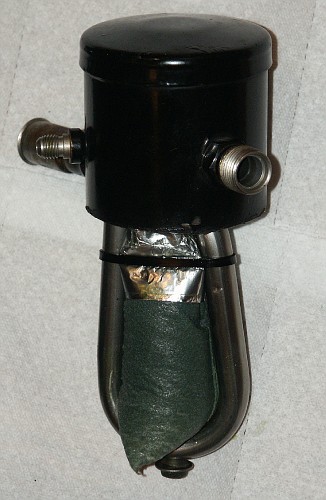
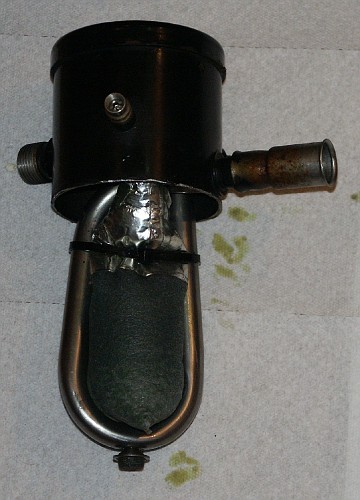
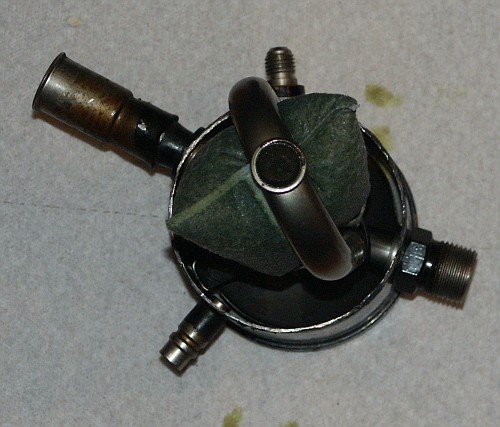

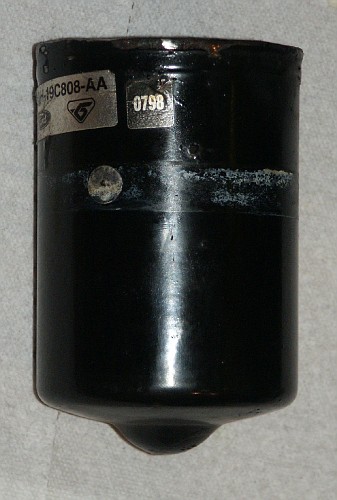
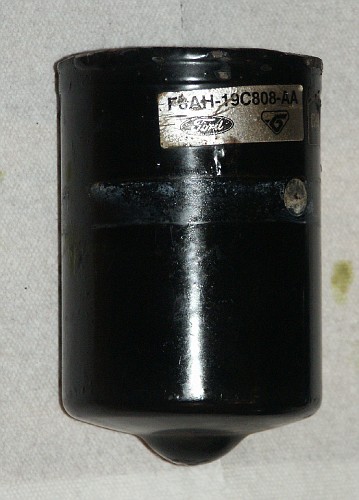
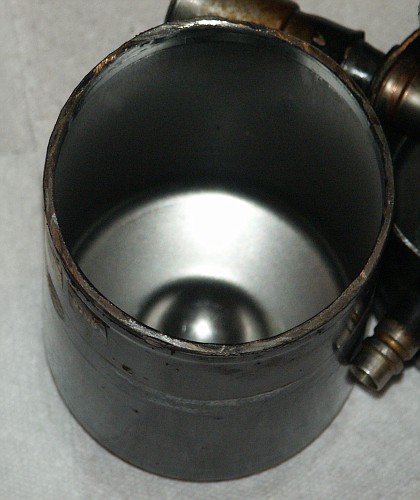
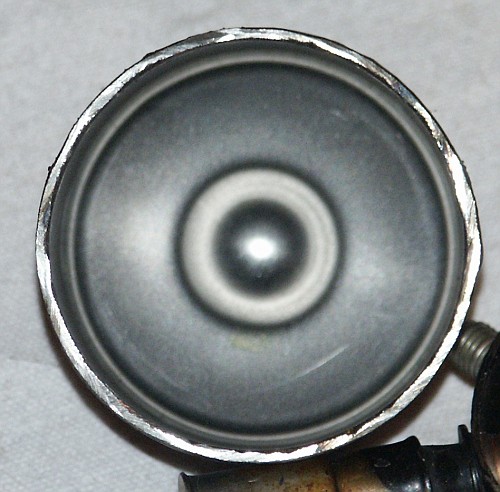
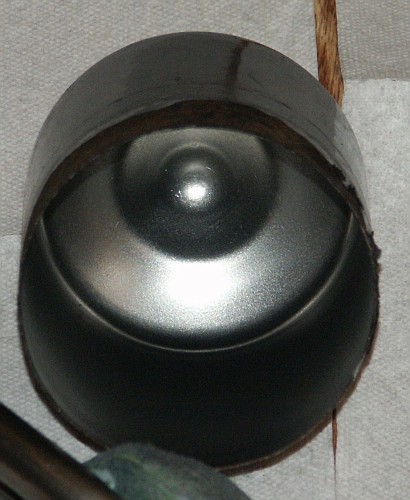
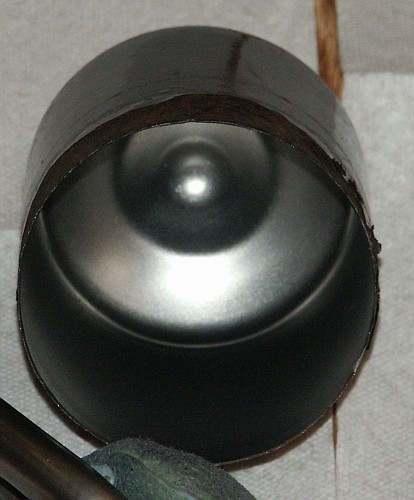
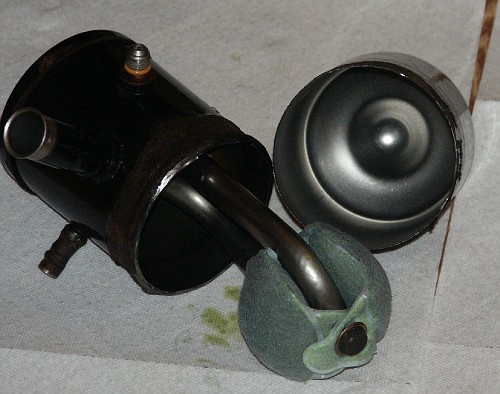

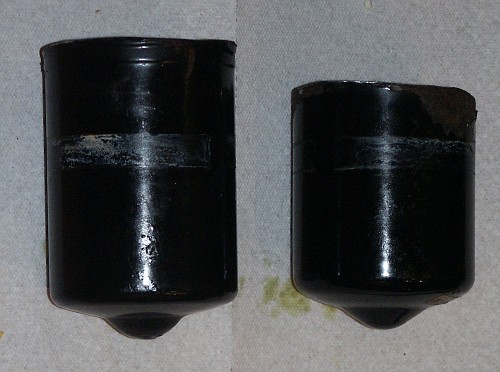
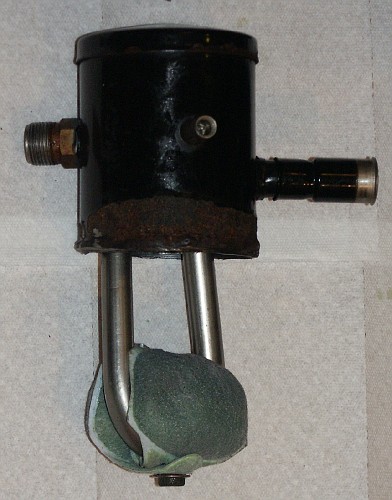
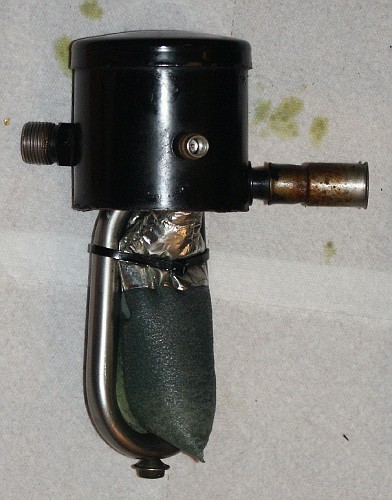
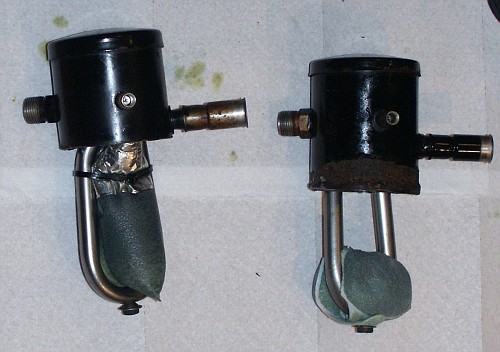
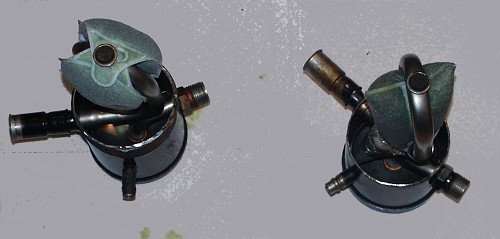
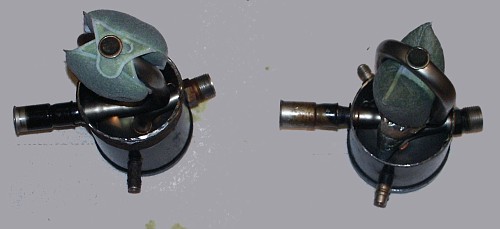

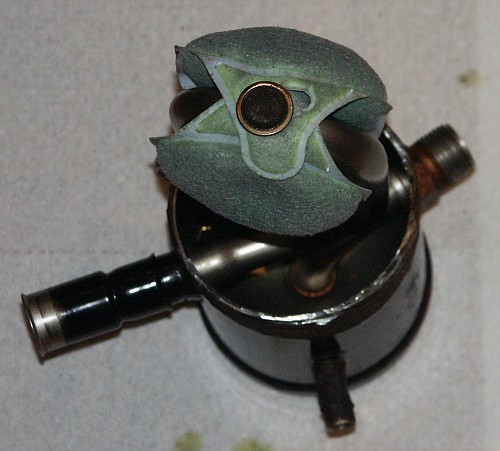
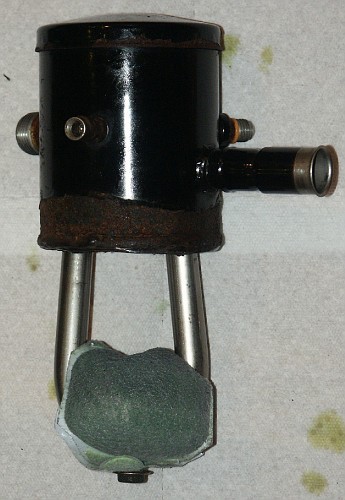
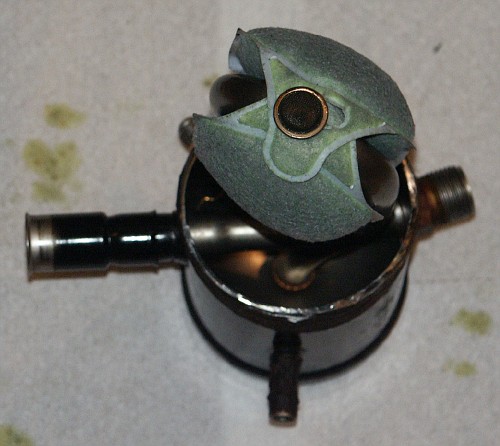

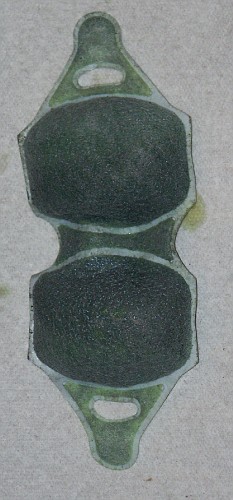
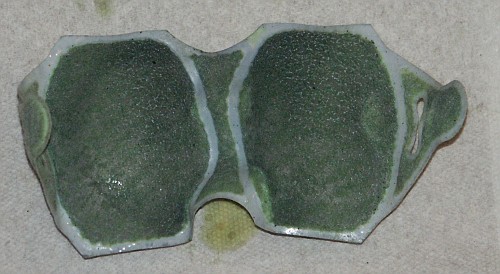
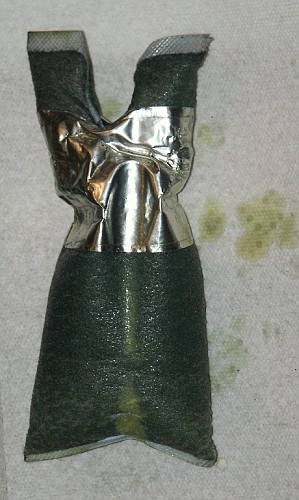
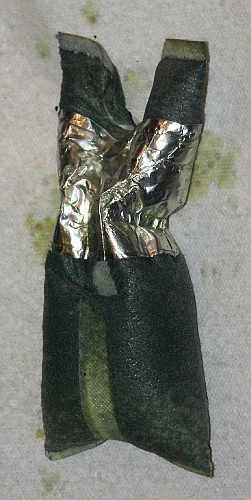
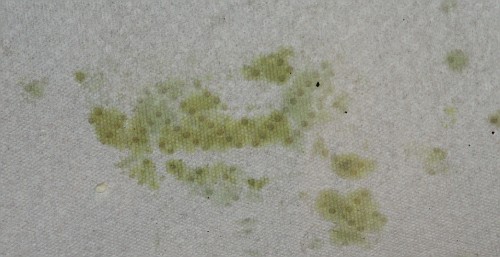
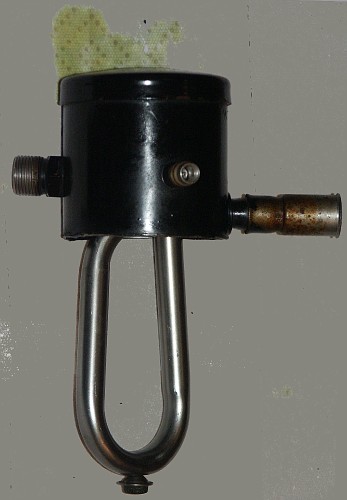
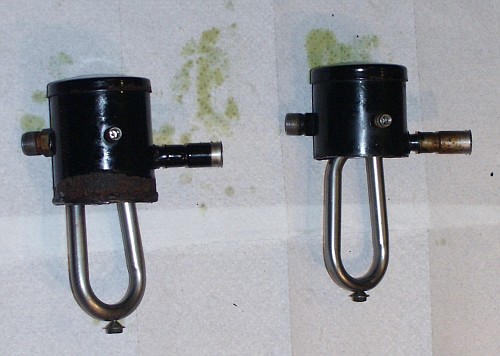


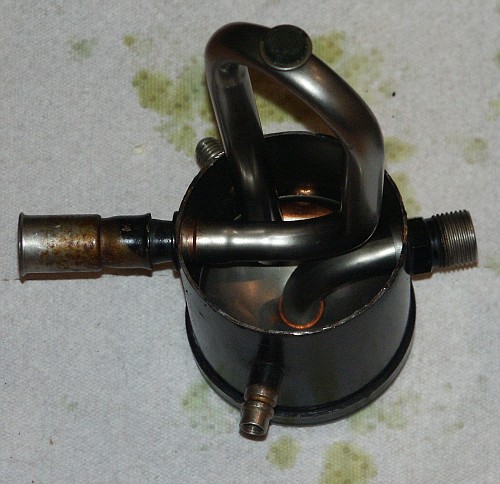

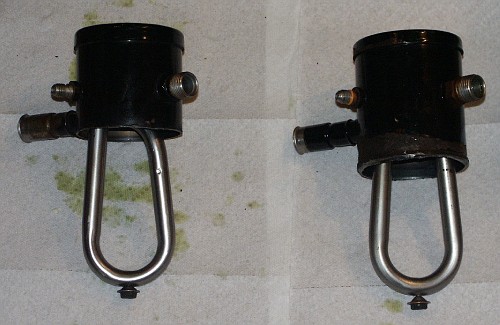
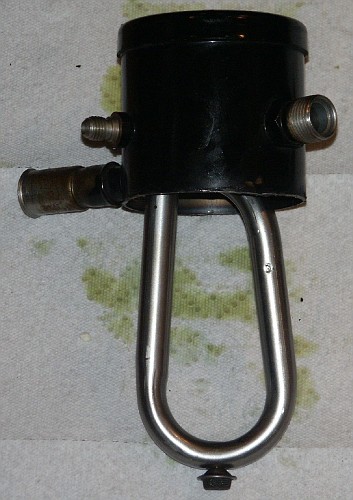
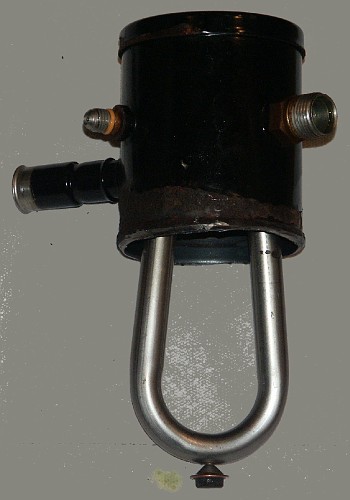
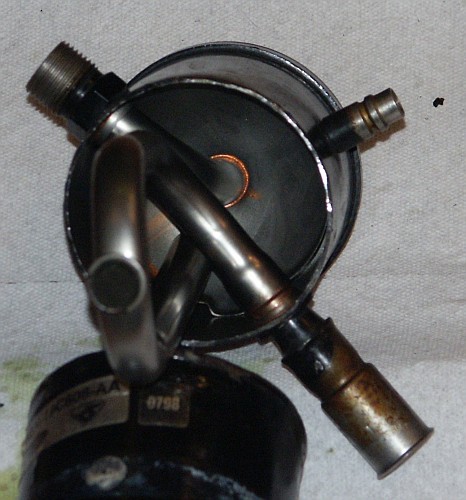
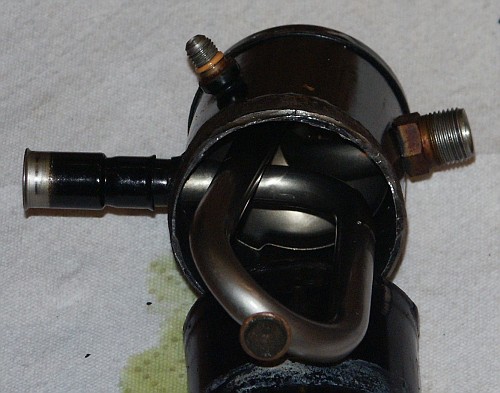
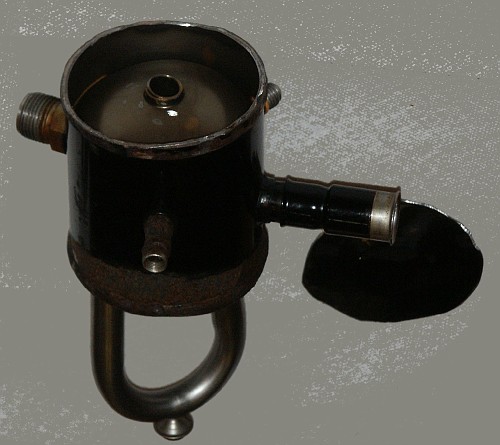
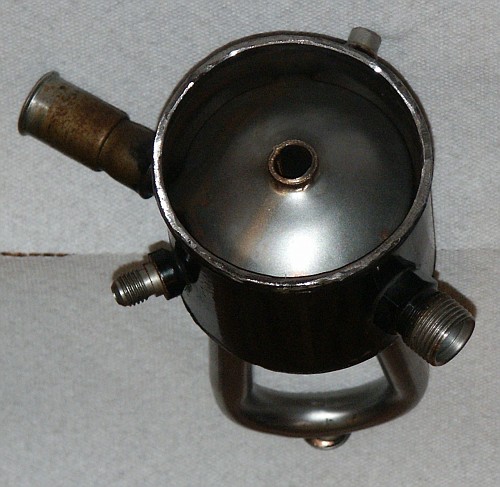
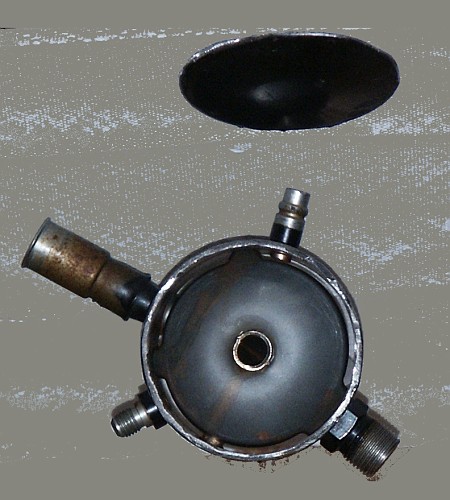
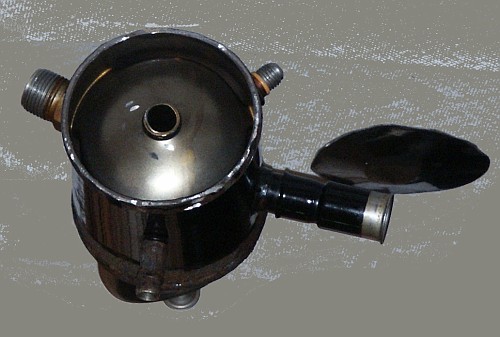
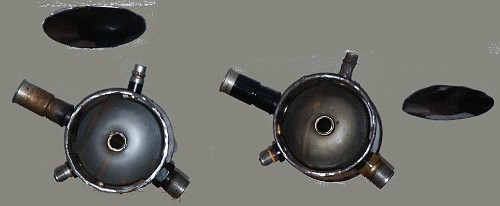
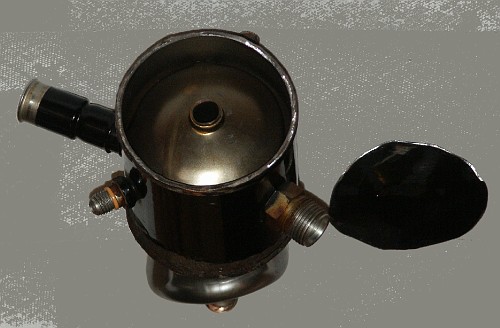
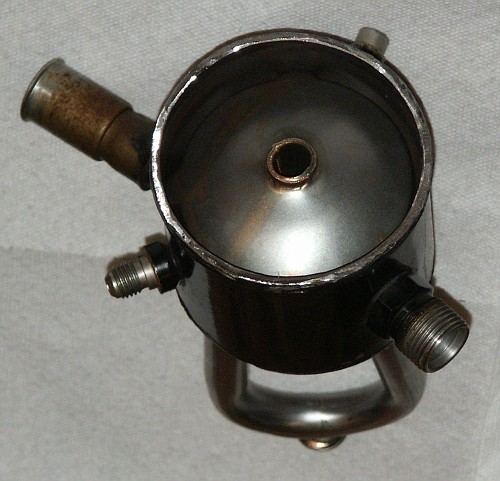
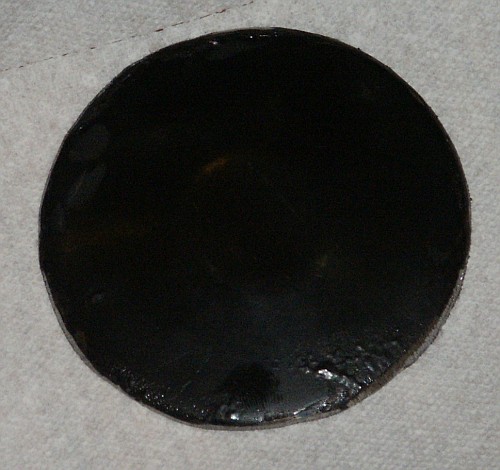
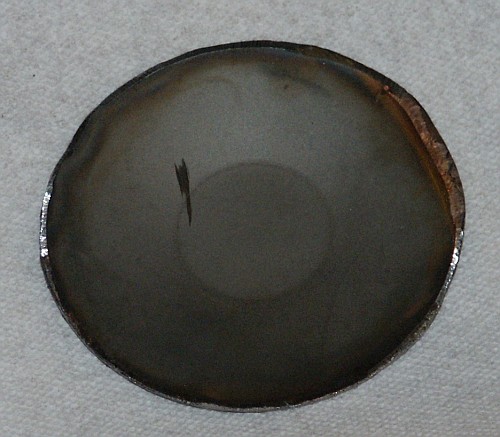
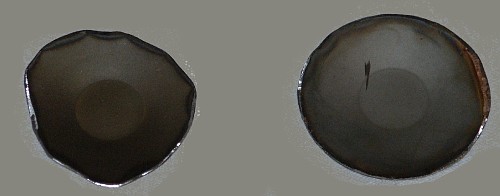
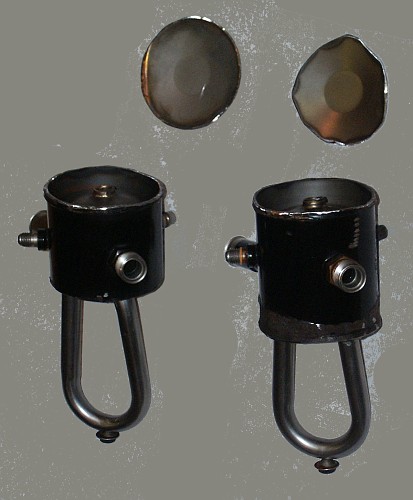
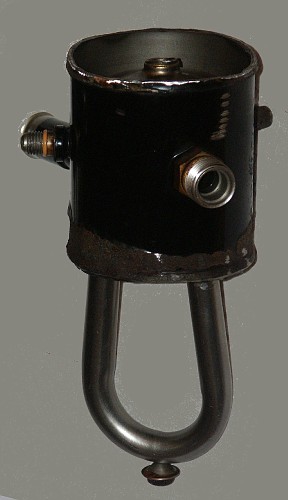
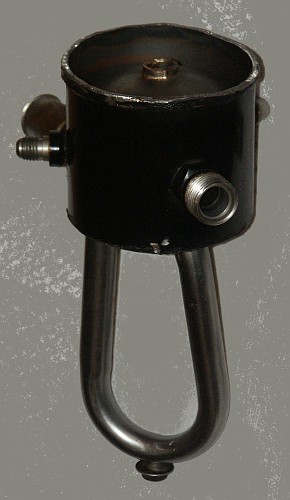
| 1996 The suction accumulator/drier is mounted on the front of the A/C evaporator core housing and attaches directly to the A/C evaporator core outlet tube. A low pressure service access gauge port valve is mounted on the side of the suction accumulator/drier. Its purpose is to provide service access to the suction side of the refrigerant system for pressure readings and system diagnosis. It also may be used for liquid charging the system when required. After entering the inlet of the suction accumulator/drier, heavier oil laden refrigerant contacts an internally mounted dome (which serves as an umbrella), and drips down onto the bottom of the canister. A small diameter oil bleed hole in the bottom of the vapor return tube allows the accumulated heavier liquid refrigerant and oil mixture to re-enter the compressor suction line at a controlled rate. As the heavier mixture passes through the small diameter liquid bleed hole, it has a second opportunity to vaporize and recirculate through the A/C compressor without causing compressor damage due to slugging. A fine mesh screened filter fits tightly around the bottom of the vapor return tube to filter out refrigerant system contaminant particles. A desiccant bag is mounted inside the canister to absorb any moisture which may be in the refrigerant system. |
| 2002 The suction accumulator is mounted to the right of the vehicle centerline. The inlet tube of the suction accumulator attaches directly to the A/C evaporator core outlet tube and the outlet tube of the suction accumulator attaches to the evaporator to compressor suction line. After entering the inlet of the suction accumulator, heavier oil-laden refrigerant contacts an internally mounted dome (which serves as an umbrella) and drips down onto the bottom of the canister. A small diameter oil bleed hole, in the bottom of the vapor return tube, allows the accumulated heavier liquid refrigerant and oil mixture to re-enter the compressor suction line at a controlled rate. As the heavier mixture passes through the small diameter liquid bleed hole, it has a second chance to vaporize and recirculate through the A/C compressor without causing compressor damage due to slugging. A fine mesh screened filter fits tightly around the bottom of the vapor return tube to filter out refrigerant system contaminant particles. A desiccant bag is mounted inside the canister to absorb any moisture which may be in the refrigerant system. A fitting located on the side of the suction accumulator is used to mount a serviceable low-pressure A/C charge port valve. |
| 2009 The suction accumulator is mounted to the RH frame rail, below the coolant degas bottle. After entering the inlet of the suction accumulator, heavier oil-laden refrigerant contacts an internally mounted dome (which serves as an umbrella) and drips down onto the bottom of the canister. A small diameter oil bleed hole, in the bottom of the vapor return tube, allows the accumulated heavier liquid refrigerant and oil mixture to re-enter the compressor suction line at a controlled rate. As the heavier mixture passes through the small diameter liquid bleed hole, it has a second chance to vaporize and recirculate through the A/C compressor without causing compressor damage due to slugging. A fine mesh screened filter fits tightly around the bottom of the vapor return tube to filter out refrigerant system contaminant particles. A desiccant bag is mounted inside the canister to absorb any moisture which may be in the refrigerant system. |